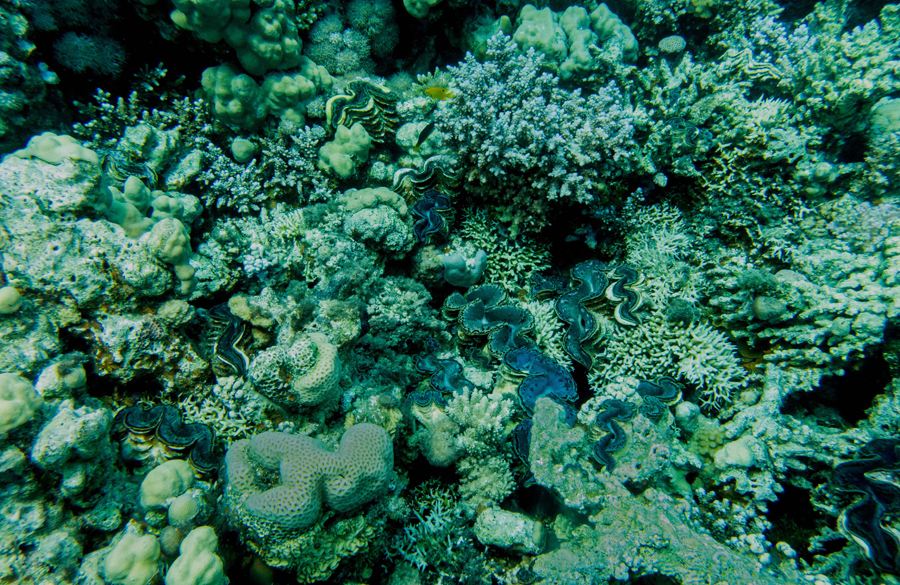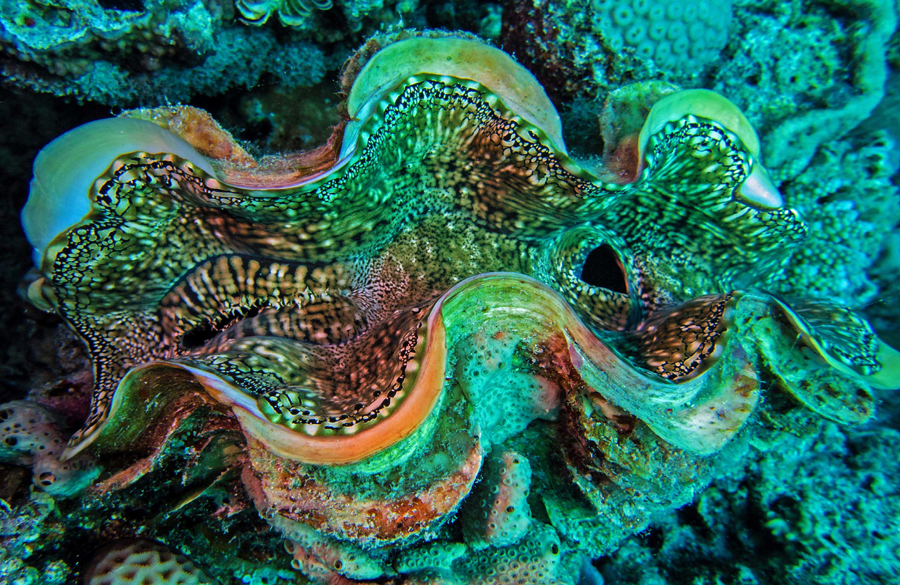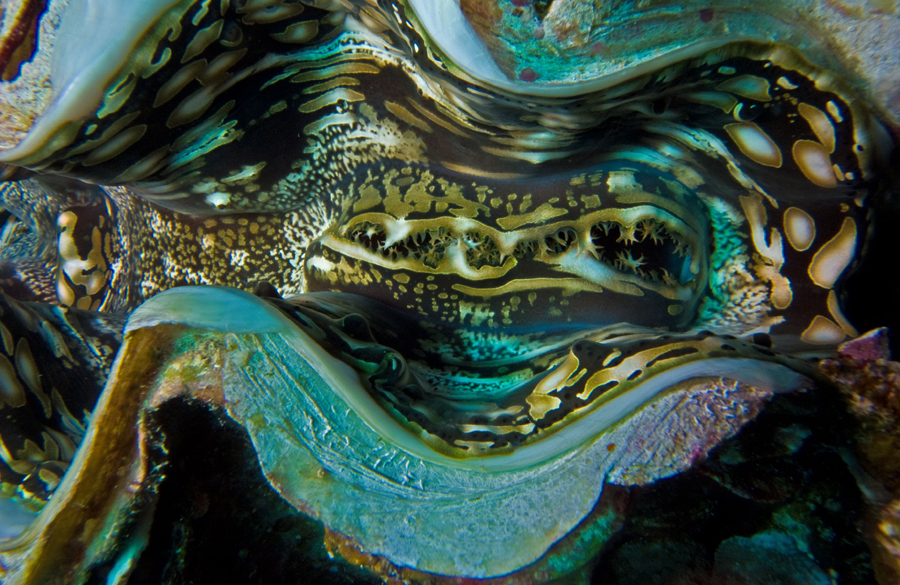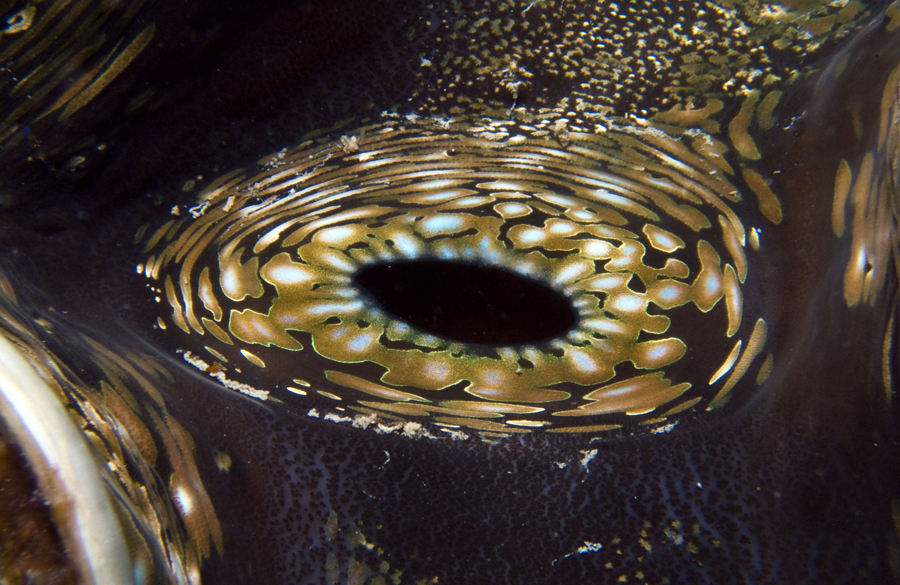TRIDACNA GIANT CLAM

All mussels, so also the Tridacna, belong to the trunk of the mollusks (Mollusca). Typical for the molluscs are two calcareous shells which are held together by a sphincter muscle.
In case of danger the muscles become active and close the shell. The mussel opens for feeding. This process of opening and closing can be watched very well by the diver with the giant clam.
Firstly because it is big and secondly because, unlike its relatives, it is easy to find and see in the coral reef. This is mainly due to the striking and strong color of the outwardly directed mussel flesh.
This is exactly what makes the Tridacna a speciality among mussels. Here a specimen Tridacna squamosa.

In contrast to all other mussels, the entrance opening, that is the mouth for food intake and the anus is clearly visible through the mouth, water inlet opening (ingestion opening)
the water is sucked in and passed through the gills, where the micromillimeter-sized food particles are filtered out and absorbed.

Through the anus, water outlet (egestion opening) the water is ejected with a powerful muscle contraction.
If a diver holds the flat hand about 3 cm above the anus, the ejected water stream can be clearly felt.

Honestly, who has such a colorful mouth and anus?
Who or what is responsible for the color of the giant clam? Is it genetically given? Created in the DAN of the Tridacna?
The answer is amazing! Neither nor.
Let us begin with the conception, birth and the first days of life of a giant clam.
The giant clam is hermaphroditic, so it has male and female gonads.
After messenger substances ring in the "mussel wedding", hundreds of millions of sperm and eggs are rejected. About 12 hours after fertilization, the larvae hatch. This is followed by several metamorphoses (transformations) at 12-hour intervals until the size of 160 microns, or 0.16mm, is reached. Already in this size they are two-shelled and start to feed on zooxanthellae. The color pigments of the zooxanthellae, which are ingested with the first food intake, decide which coloration the giant clam has.
Photos: Johann Vifian
Sources: https://www.korallenriff.de
